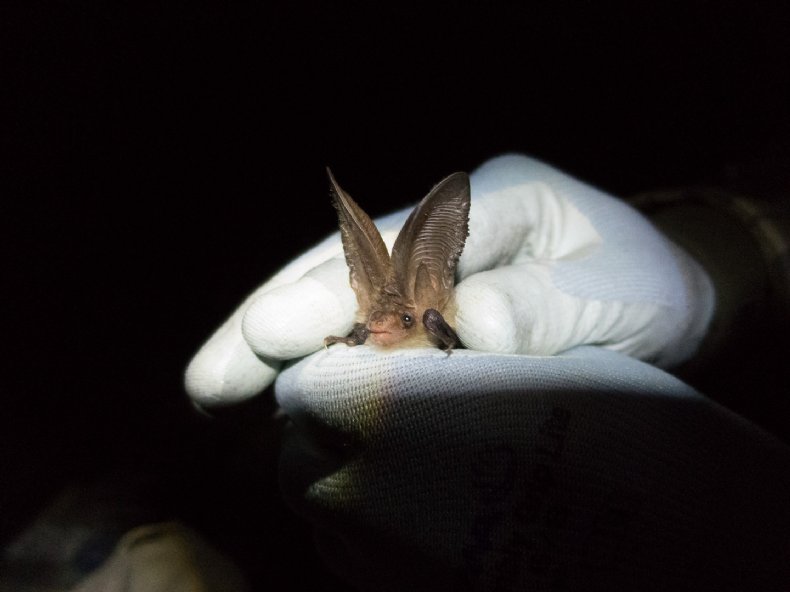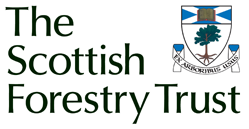The impact of commercial woodland management on temperate insectivorous bats
Carried out by: University of Bristol / University of Cumbria
Summary Description:
Renewable energy legislation and increasing fuel prices are stimulating use of alternative energy sources. Woodfuel production is gaining momentum. A Forestry Commission initiative aims to encourage and facilitate woodfuel management, support rural woodfuel business and remove barriers to production. Wildlife legislation is seen as a barrier to woodfuel production, yet suffers from a deficiency in empirical evidence.
Bats account for a third of UK mammal species. All species have seen a marked declined over the last century and are afforded full protection under European and domestic legislation. A change in woodland management has shown to impact on woodland foraging bat species and their prey. This PhD project will investigate bat and prey communities in broadleaved woodlands.
It is hypothesised that managing for woodfuel production will be beneficial for invertebrate and bat communities and, as such, this research is expected to provide new evidence that should facilitate greater uptake of commercial woodfuel production in the UK.
Objectives:
1 Quantify bat diversity and abundance under different woodland management regimes
2 Determine whether management for woodfuel is beneficial or detrimental to each individual bat species recorded
3 Investigate species presence and abundance indicators 4 Provide guidelines for future woodfuel management that optimise woodfuel production while conserving and enhancing bat diversity and abundance.
Timescale: 2013-2016
SFT Funds Awarded: £23,000
Project Outcomes:

Woodland is an important natural resource providing wood derived biomass for use as a carbon neutral source of heating and electricity. The role of biomass in reducing our dependence on fossil fuels should not be underestimated, nor should the potential negative impacts on biodiversity as land managers are incentivised to revert under-managed woodland into production to meet renewable targets. The effect of woodland management on wildlife needs more scientific research.
The influence of continuous cover selective thinning silviculture on bats and their insect prey is investigated, and use emerging technologies to identify the ecological requirements of a woodland specialist bat at different scales. When compared to unmanaged woodland (minimal intervention and abandonment) bat richness was higher in managed woodland (intermediate and heavy thinning) because uncluttered understory vegetation provided opportunity for edge and open foraging bats, in additional to woodland interior specialists. Common and adaptable edge foragers were more active in managed woodland. Interior foragers and tree-roosting bats were more active in unmanaged woodland and often absent from managed woodland. Bats responded positively to standing dead trees and tree cavities, and a relatively open and heterogenic canopy architecture. Standing dead trees were three times more abundant, and tree cavities five times greater in unmanaged woodland. Canopy architecture was similar between managed and unmanaged woodland.
Bats and insects had contrasting non-linear temporal responses to time since last management with bat activity reducing and insect numbers peaking in early stage successional woodland. Barbastella barbastellus prefers to roost in ancient semi-natural broadleaved woodland primarily because it harbours more tree cavities than younger woodland. High energetic demands of pregnant and lactating bats influenced roost selection and behaviour. B. barbastellus is a moth specialist and selects prey based on abundance.
Linear landscape features such as hedgerows provide food for moth larvae and were used by B. barbastellus for predating adult moths. Moth distributions are shifting north which may reduce bat prey abundance in the south of England. Bats respond well to characteristics that form in old age woodland. The frequency of standing dead trees and number of cavities in production woodland limits their value to bats. Tree roost availability and canopy architecture characteristics can be encouraged in young woodland by minimal intervention management, or in production woodland through positive thinning management. Improving B. barbastellus roosting and foraging habitat will conserve habitat suitable for all developmental stages of their moth prey.
How have the results been used?
Papers continue to be published from the initial research on this project. You can read the latest information by downloading the latest paper here. Andy Carr, former PhD student on the project and lead author of the paper can be contacted here for further information.
SFT/FC Joint Bursary Award Scheme:. This project has received funding from the SFT/FC Joint Bursary Award.
THESIS ABSTRACT
Woodland is an important natural resource providing wood-derived biomass for use as a carbon lean source of heating and electricity. The role of biomass in reducing our dependence on fossil fuels should not be underestimated, nor should the potential negative impacts on biodiversity as land managers are incentivised to bring under-managed woodland back into production to meet renewable targets. The effect of woodland management on wildlife needs more scientific research. In this thesis, I investigate the influence of the silvicultural practice involving selective thinning of woodland over time on bats and their insect prey, and use emerging technologies to identify the ecological requirements of a woodland specialist bat species at different spatial scales.
When compared to unmanaged woodland (minimal intervention and underutilised), bat species richness was higher in managed woodland (selective thinning) because uncluttered understory vegetation provided opportunities for edge and open foraging bats, in addition to woodland interior specialists. Common and adaptable edge foragers were more active in managed woodland. Interior foragers and tree-roosting bats were more active in unmanaged woodland and often absent from managed woodland. Bats responded positively to standing dead trees and tree cavities, and to a relatively open and heterogeneous canopy architecture. Standing dead trees were three times more abundant, and tree cavities five times more frequent in unmanaged woodland. Canopy architecture was similar between managed and unmanaged woodland. Bats and insects had contrasting non-linear temporal responses to time since last management with bat activity reducing, and insect numbers peaking in early stage successional woodland. The woodland-dwelling bat Barbastella barbastellus roosted primarily in ancient semi-natural broadleaved woodland which contained more tree cavities than adjoining younger plantation woodland. High energetic demands of pregnant and lactating bats influenced roost selection and behaviour. B. barbastellus specialises in feeding on moths. Linear landscape features such as hedgerows provide food for moth larvae and were used by B. barbastellus for feeding on adult moths.
Bats respond well to characteristics that form in old age woodland. The relatively low frequency of standing dead trees and number of cavities in shorter rotation production woodland limits its value to bats. Tree roost availability and canopy architecture characteristics can be encouraged in young woodland by minimal intervention management, or in production woodland through positive thinning management. Improving B. barbastellus roosting and foraging habitat will conserve habitat suitable for all developmental stages of their moth prey.
Further Information
| Title | Source | Date |
|---|---|---|
| Roost selection by a rare tree-dwelling bat at different spatial scales Carr, A., Zeale, M.R.K., Weatherall, A., Jones, G., | European Bat Research Symposium - Symposium 2017, Donostia, Spain. http://www.ebrs2017.eus/EBRS2017_AbstractBook.pdf (5) | 2017 |
| CCTV enables the discovery of new barbastelle (Barbastella barbastellus) vocalisations and activity patterns near a roost Young, S., Carr, A., Jones, G., | Acta Chiropterologica - 20, 263-272. | 2018 |
| Ground-based and LiDAR-derived measurements reveal scale-dependent selection of roost characteristics by the rare tree-dwelling bat Barbastella barbastellus. Carr, A., Zeale, M.R.K., Weatherall, A., Froidevaux, J.S.P., Jones, G., | Forest Ecology and Management. - 417, 237-246. | 2018 |
| Investigating the effects of management in temperate broadleaved woodland on bats and their insect prey. PhD thesis Andy Carr | University of Bristol, Bristol, UK | 2018 |
